Here’s a question that might surprise you:
If you had a magic wand that could make you physically fit on YOUR terms, would you choose to be fit next week, next month, next year… or for the rest of your life?
Of course, you’d want to stay fit for the rest of your life.
Yet here’s what most fitness approaches miss: The way you’ve been taught to exercise may actually be working against your body’s natural ability to heal, strengthen, and thrive in your golden years and beyond.
Let’s start with some facts that might change how you think about fitness as you age.
The State of Movement After 50: What the Research Really Shows
A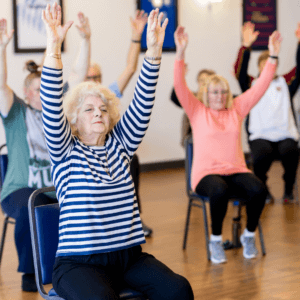 ccording to the latest data from the CDC, 36% of adults aged 65 and older experience chronic pain, with 13.5% suffering from high-impact chronic pain that frequently limits life or work activities. Even more concerning, over 51.6 million American adults (21% of the population) live with chronic pain, and there are 52.4 new cases of chronic pain per 1,000 people each year—a higher rate than diabetes, depression, and high blood pressure.
ccording to the latest data from the CDC, 36% of adults aged 65 and older experience chronic pain, with 13.5% suffering from high-impact chronic pain that frequently limits life or work activities. Even more concerning, over 51.6 million American adults (21% of the population) live with chronic pain, and there are 52.4 new cases of chronic pain per 1,000 people each year—a higher rate than diabetes, depression, and high blood pressure.
And here’s what’s particularly relevant to anyone over 50…
Only about 14% of older adults in the United States meet the recommended amount of physical activity, and inactivity was 30% higher among those with a chronic disease.
This creates a troubling cycle: people avoid exercise due to pain or fear of injury, which leads to further physical decline and increased risk of chronic conditions.
The Neurological Reality of Movement and Pain
Recent research has revealed something fascinating about how our brains process movement and pain. When you experience pain repeatedly during exercise – even the discomfort you might think is “good” – pain signals in the nervous system can remain active for several years if they are altered in the spinal cord.
When an individual suffers from chronic pain, the natural response is doing anything to reduce it. For many, that instinct is to rest and relax. This response can initiate a vicious cycle of self-limiting activity. The result? Too much rest can be detrimental and result in atrophy (or wasting) of the muscles, leading to further health problems, including poor posture, less joint stability, and other structural problems.
But there’s also remarkable news: your brain retains incredible capacity for change throughout your entire life.
The Science of Neuroplasticity and Exercise After 50
One of the most exciting discoveries in recent decades is that older adults maintain the capacity for skill improvement through training, and the capacity for motor learning is preserved across the lifespan.
Research shows that motor, physical and mental activities often promote brain fitness or health (e.g., the capacity to learn, improve and meet various cognitive demands) and can even help prevent functional decline.
This neuroplasticity – your brain’s ability to reorganize and adapt – is the key to understanding why some people thrive with exercise after 50 while others struggle.
Why Traditional Exercise Approaches Fall Short
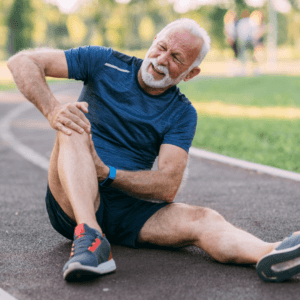 Most fitness programs focus on what we call “performance-first” thinking. They emphasize sets, reps, weight, and intensity before addressing the foundational elements that determine whether exercise will help or harm you.
Most fitness programs focus on what we call “performance-first” thinking. They emphasize sets, reps, weight, and intensity before addressing the foundational elements that determine whether exercise will help or harm you.
Adults 50 and older are prone to more exercise-related injuries in general, compared with younger adults. This happens because most people begin to experience bone, joint, tendon and muscle loss sometime in their mid-40s to early 50s, and tendons become drier and stiffer with age, making them more prone to tearing if they’re stretched just a little too far.
However, here’s the crucial insight: fear of injury is reported as a barrier to exercise by older adults, yet research shows that novice older adults initiating exercise are not at increased risk of injury when proper protocols are followed.
The difference lies in the approach.
The Revolutionary Three-Filter System: A Research-Based Approach
After extensive research involving motor learning neurologists, exercise mechanics experts, and university professors studying over 37,000 participants across multiple studies, a pattern emerged: the most successful exercise approaches for adults over 50 don’t start with performance – they start with how your brain connects to your body.
This research-backed approach centers on three sequential “filters” that transform any exercise from potentially harmful to genuinely therapeutic.
Filter #1: Sensory Perception Optimization – The Neurological Foundation
 The first filter addresses something most fitness programs completely ignore: the neurological drive from your mind to your body during movement.
The first filter addresses something most fitness programs completely ignore: the neurological drive from your mind to your body during movement.
Research demonstrates that focused internal attention on movement details can result in 20-60% better fitness results immediately – without changing sets, reps, or weight. This happens because greater neurological drive coordinates more stabilizer muscles and prime movers while creating higher electrical signals to recruit more muscle fibers.
Here’s how this works in practice: When performing any movement – whether it’s a simple squat or picking up groceries – you’re simultaneously feeling your body mechanics and sensing foot placement, spinal alignment, and joint positioning. You’re controlling your breath by coordinating breathing patterns with movement phases. You’re managing emotions by maintaining positive connection with your body rather than fighting through discomfort. And you’re staying present by focusing on quality of movement rather than just quantity.
The Breathing Component: Most people breathe completely wrong during exercise. Proper breathing involves your ribcage expanding on the inhale, your lower abdomen naturally coming out, your pelvic floor relaxing, and your organs dropping down to make space for your lungs. On the exhale, you draw your entire abdomen from pubic bone to lower ribcage back in, creating what researchers call a “second heart” effect that flushes toxins and supports your spine naturally.
Filter #2: Alignment – The Structural Foundation
The second filter ensures that all movement patterns are performed with optimal body mechanics. This isn’t about perfection – it’s about progressively training your body to move in ways that support rather than strain your joints and tissues.
There’s a secret that elite movement specialists know about foot placement that most people never discover. When you understand how to create what’s called a “tripod foundation” – feeling equal pressure behind your big toe, little toe, and center of your heel – something remarkable happens. Your entire kinetic chain automatically aligns, your knees track properly, and your pelvis finds its natural position without you having to think about it.
For upper body movements like rows, the magic lies in understanding that your shoulder blades determine the health and functionality of your shoulders, and they’re stabilized by your back muscles. This makes back-strengthening exercises, such as rows, more important than push movements for most people over 50. When you position your shoulder blades for optimal scapular stability while maintaining proper spinal curves and engaging core musculature to protect the lower back, you’re not just exercising – you’re rebuilding your body’s structural foundation.
Filter #3: Progressive Performance – The Results Amplifier
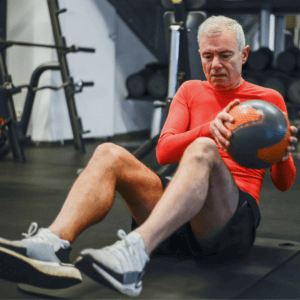 Only after mastering the first two filters do you begin to incorporate traditional performance elements, such as increased weight, repetitions, or intensity. At this stage, every exercise becomes therapeutic rather than potentially harmful.
Only after mastering the first two filters do you begin to incorporate traditional performance elements, such as increased weight, repetitions, or intensity. At this stage, every exercise becomes therapeutic rather than potentially harmful.
The progressive approach begins with bodyweight or minimal resistance, prioritizing movement quality over quantity. You can then gradually increase challenge while maintaining Filters 1 and 2, always listening to your body’s feedback signals. Research shows that this approach promotes beneficial adaptations without the inflammatory stress that typically accompanies traditional high-intensity exercise.
The comprehensive system that teaches how to apply these three filters to any exercise or movement is detailed here for those ready to transform their approach.
The Age-Specific Benefits: What Changes After 50
Understanding how your body responds to exercise after 50 helps explain why this approach is so effective:
Neurological Changes: Strength gains in the first six weeks come primarily from improved neurological drive and connection, not muscle growth. The Three-Filter System optimizes this neurological adaptation from the very beginning.
Recovery Differences: While healing may take longer after injuries in older adults, the preventive approach of proper alignment and mind-body connection dramatically reduces injury risk in the first place.
Motivation Factors: Research shows that only 4-5% of people actually want high-intensity, “feel the burn” exercise. The other 95% want to feel comfortable while getting stronger – which is exactly what this approach provides.
The Science Behind Low-Impact, High-Effectiveness Movements
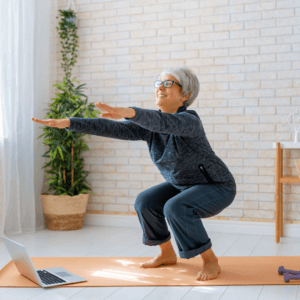 Let’s examine how this approach applies to the most beneficial exercises for adults over 50:
Let’s examine how this approach applies to the most beneficial exercises for adults over 50:
Squatting Movements: The Foundation Exercise
Squats are among the most important functional movements we can perform, however they are only valuable when done with proper alignment. A misaligned squat can create:
- Shear stress in the knees
- Joint damage and grinding
- Negative forces on the spine
- Progressive dysfunction that gets “trained in”
A properly executed squat using the Three-Filter System:
- Establishes foot tripod stability
- Maintains a neutral pelvis
- Coordinates breathing with movement phases
- Strengthens the entire kinetic chain therapeutically
Rowing Movements: The Posture Protector
 Rowing exercises are crucial for strengthening the back muscles that stabilize your shoulder blades. However, most people perform them incorrectly, which can:
Rowing exercises are crucial for strengthening the back muscles that stabilize your shoulder blades. However, most people perform them incorrectly, which can:
- Reinforce poor posture
- Create shoulder impingement
- Stress the lower back
- Train dysfunctional movement patterns
Proper rowing technique emphasizes:
- Scapular retraction and depression
- Core engagement throughout the movement
- Controlled tempo in both directions
- Mind-muscle connection with the target muscles
Core Training: Beyond Traditional “Abs”
Research shows that core stability is more about how you brace your abdomen during other exercises than performing isolated abdominal exercises. The most important core training happens when you:
- Coordinate breathing with movement
- Maintain neutral spine during compound movements
- Activate deep stabilizer muscles
- Integrate pelvic floor function
The Comprehensive Benefits: What Research Shows You Can Expect
When older adults follow evidence-based exercise protocols that emphasize proper approach over intensity, research consistently shows improvements across multiple domains.
Cognitive Benefits emerge as one of the most exciting discoveries. Improved memory and executive function become noticeable within weeks, while enhanced neuroplasticity and brain-derived neurotrophic factor (BDNF) production create lasting changes in brain structure. Better sleep quality and mood regulation follow naturally, along with reduced risk of cognitive decline and dementia that researchers are calling “exercise as medicine” for the brain.
Physical Benefits manifest in ways that directly impact daily life. Increased muscle mass and bone density help prevent the frailty that many people fear about aging. Improved balance and reduced fall risk give you confidence to navigate stairs, uneven surfaces, and daily activities without fear. Better cardiovascular health develops without the excessive strain of high-intensity programs, while enhanced functional capacity for daily activities means you can keep doing the things you love for decades longer.
Emotional Benefits may be the most immediately noticeable changes. Reduced anxiety and depression often appear within the first few weeks as your brain chemistry responds to appropriate movement. Increased confidence in movement replaces the fear and uncertainty many people develop about their bodies as they age. An improved body image and self-efficacy create a positive feedback loop that motivates you to continue moving.
Common Mistakes That Sabotage Results
Even with the best intentions, certain approaches can undermine your progress and leave you feeling frustrated or even injured.
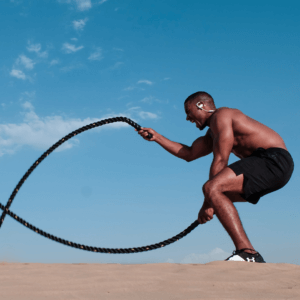 The “No Pain, No Gain” Fallacy represents perhaps the most dangerous misconception for older adults. This outdated philosophy is particularly harmful because research shows that exercise should be challenging yet not painful. Pain during exercise often leads to activation of fear-avoidant behaviors, where your brain starts protecting you by making you avoid movement altogether.
The “No Pain, No Gain” Fallacy represents perhaps the most dangerous misconception for older adults. This outdated philosophy is particularly harmful because research shows that exercise should be challenging yet not painful. Pain during exercise often leads to activation of fear-avoidant behaviors, where your brain starts protecting you by making you avoid movement altogether.
The “More is Better” Trap catches many well-intentioned people who believe that if some exercise is good, more must always be better. However, research indicates something quite different. Recovery becomes more important with age, not less important. Overtraining can actually accelerate aging processes by creating excessive inflammation and stress in your system. Consistency beats intensity for long-term results every single time, and quality of movement trumps quantity in ways that compound over years and decades.
The “One-Size-Fits-All” Approach ignores the reality that every person over 50 has a unique movement history, different previous injuries, varying current fitness levels and limitations, personal preferences and motivations that drive adherence, and different amounts of available time and resources to dedicate to fitness.
Building Your Personal Movement Practice
Creating a sustainable exercise routine after 50 requires a thoughtful, individualized approach that honors where you are right now while guiding you toward where you want to be.
Starting Where You Are begins with an honest assessment of your current abilities. Ask yourself: What movements feel comfortable and natural to your body right now? Where do you experience stiffness or discomfort during daily activities? What physical activities did you enjoy in the past that might give you clues about what you’d enjoy now? Most importantly, what are your specific goals and motivations for wanting to move better and feel stronger?
The Progressive Development Model offers a structured approach that builds gradually, rather than overwhelming your system. During weeks 1-2, focus entirely on Filter #1 by practicing breathing techniques, developing body awareness during simple movements, and establishing positive emotional connections with exercise that will serve as your foundation. In weeks 3-4, add Filter #2 by learning proper form for basic movements, using mirrors or video to check alignment, and working with qualified professionals when possible to ensure you’re building the right habits. From week 5 onward, gradually introduce Filter #3 by slowly increasing repetitions or resistance while always maintaining the first two filters, progressing based on how you feel rather than arbitrary timelines that don’t account for your individual recovery needs.
Creating Sustainable Habits draws from decades of research on behavior change, which shows that successful exercise habits share certain characteristics. They’re linked to existing routines in your life, making them easier to remember and implement. They start small and build gradually rather than demanding dramatic lifestyle changes overnight. They include social support components because humans are naturally social creatures who thrive with encouragement and accountability. Perhaps most importantly, they focus on intrinsic rather than extrinsic motivation – meaning you do them because they make you feel good, not because someone told you that you should.
The Role of Professional Guidance
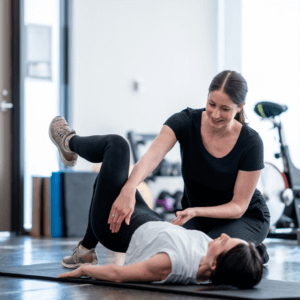 While the Three-Filter System can be applied independently, working with qualified professionals can accelerate your progress and ensure safety in ways that are particularly valuable for the 50+ population.
While the Three-Filter System can be applied independently, working with qualified professionals can accelerate your progress and ensure safety in ways that are particularly valuable for the 50+ population.
Seeking Professional Help becomes important if you have a history of injuries or chronic pain that makes you uncertain about what movements are safe for your body. If you’re returning to exercise after a long break, professional guidance can help you avoid the common mistake of doing too much too soon. Those with complex health conditions like diabetes, heart disease, or arthritis benefit enormously from professionals who understand how to modify exercises appropriately. Even if you’re relatively healthy, working with an expert can help you accelerate your progress safely and avoid developing bad habits that are hard to break later.
What to Look for in a Fitness Professional matters more than many people realize. The ideal professional for older adults should understand age-related changes in physiology and how they affect exercise response and recovery. They should emphasize movement quality over intensity, recognizing that perfect form with lighter weights beats sloppy form with heavier weights every time. Experience with medical conditions common in older adults, like osteoporosis, arthritis, and balance issues, is crucial for safety and effectiveness. Perhaps most importantly, they should focus on functional rather than purely aesthetic goals, understanding that your priority is to move better and feel younger, not necessarily to look like a fitness model.
Your Next Steps: Putting Knowledge Into Action
Understanding the science is only the beginning. The real transformation happens when you apply these principles consistently in your daily life.
The challenge many people face is knowing how to implement these concepts across all the different movements and activities they want to pursue. While the Three-Filter System provides the framework, learning to apply it to squats, rows, core work, balance training, and functional movements requires comprehensive guidance.
For those ready to learn the complete application of these principles to their movement practice, comprehensive training is available here.
Why This Changes Everything After 50
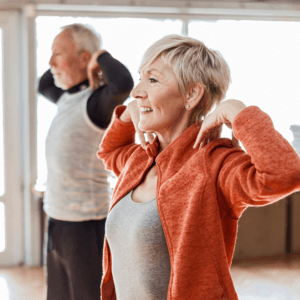 When you exercise the traditional way, you’re fighting against your body’s natural aging process. You’re adding inflammation and degeneration on top of what’s already happening naturally.
When you exercise the traditional way, you’re fighting against your body’s natural aging process. You’re adding inflammation and degeneration on top of what’s already happening naturally.
With the Three-Filter System, you’re literally reversing the aging process with every workout.
Your neurological system improves first (that’s where strength gains come from in the first 6 weeks). Your alignment improves. Your mind-body connection deepens. And then – and only then – you add performance elements that make you genuinely stronger (without the pain and dysfunction).
The research is clear: physical activity and exercise can improve pain severity and physical function, as well as the consequent quality of life. The evidence suggests exercise benefits brain function and cognition, which may translate into reduced risk for Alzheimer’s disease in humans.
However, the approach matters. A squat can either damage your knees, stress your spine, and create dysfunction, or it can heal your body, improve your posture, and make you functionally stronger. The difference isn’t the exercise – it’s the approach.
The same principle applies to every movement in your fitness routine. When you understand how to filter your approach through sensory perception, alignment, and then performance, every exercise becomes an opportunity to feel younger, stronger, and more capable.
Top Recommendation: The Full Body Fix
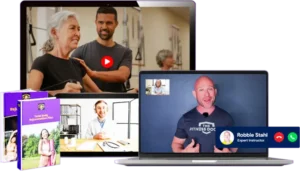 If you are in your 40s, 50s, 60s, 70s, or beyond, this complete anti-aging & longevity fitness program is a must. Guided by today’s widely recognized top expert in anti-aging fitness, Robbie Stahl, you will be shown how to do all the safest & proven most effective exercises for peak functional fitness in every area of your body – your feet and legs, hips and pelvis, lower and upper back, arms, shoulders, and neck!
If you are in your 40s, 50s, 60s, 70s, or beyond, this complete anti-aging & longevity fitness program is a must. Guided by today’s widely recognized top expert in anti-aging fitness, Robbie Stahl, you will be shown how to do all the safest & proven most effective exercises for peak functional fitness in every area of your body – your feet and legs, hips and pelvis, lower and upper back, arms, shoulders, and neck!
Because here’s the truth: most people in their middle years and golden years make huge exercise mistakes that stifle progress and, worse, lead to joint issues, posture issues, and a wide range of injuries. (In fact, 87% of those who exercise experience some form of injury!)
Thankfully, after over 15,000 hours of dedicated research, Robbie Stahl has created this revolutionary and deeply evidence-based 5-class series that goes light years beyond the often dangerously incorrect guidance from personal trainers and online fitness “gurus”.
He will show you, step-by-step, how to correctly do all the safest and most effective exercises – for your peak strength, balance, mobility and more – while avoiding or exacerbating joint issues, posture and mobility issues, and injuries.
You will even discover where your personal misalignments are (a topic that even today’s most popular fitness “experts” often get wrong), along with clear guidance on how to correct them!
This highly acclaimed Full Body Fix has already helped tens of thousands of people in their 40s, 50s, 60s, 70s and beyond avoid and overcome pain and other issues and achieve full body functionality, so they can maintain true fitness and independence now and very late into life.
References:
- Centers for Disease Control and Prevention. Chronic Pain and High-impact Chronic Pain in U.S. Adults, 2023. NCHS Data Brief No. 518.
- U.S. Pain Foundation. 2024 Chronic Pain Fact Sheet.
- Geneen LJ, Moore RA, Clarke C, et al. Physical activity and exercise for chronic pain in adults: an overview of Cochrane Reviews. Cochrane Database Syst Rev. 2017.
- Aging, brain plasticity, and motor learning. ScienceDirect. 2024.
- Brain plasticity and motor practice in cognitive aging. PMC. 2014.
- Centers for Disease Control and Prevention. Report: Adults 50 and Older Need More Physical Activity.
- A 12-month incidence of exercise-related injuries in previously sedentary community-dwelling older adults following an exercise intervention. PMC. 2013.
- Neurobiological markers of exercise-related brain plasticity in older adults. ScienceDirect. 2012.
- Strength Training Research for Longevity
- Exercise Benefits for Cardiovascular Health
- Functional Fitness and Aging Research


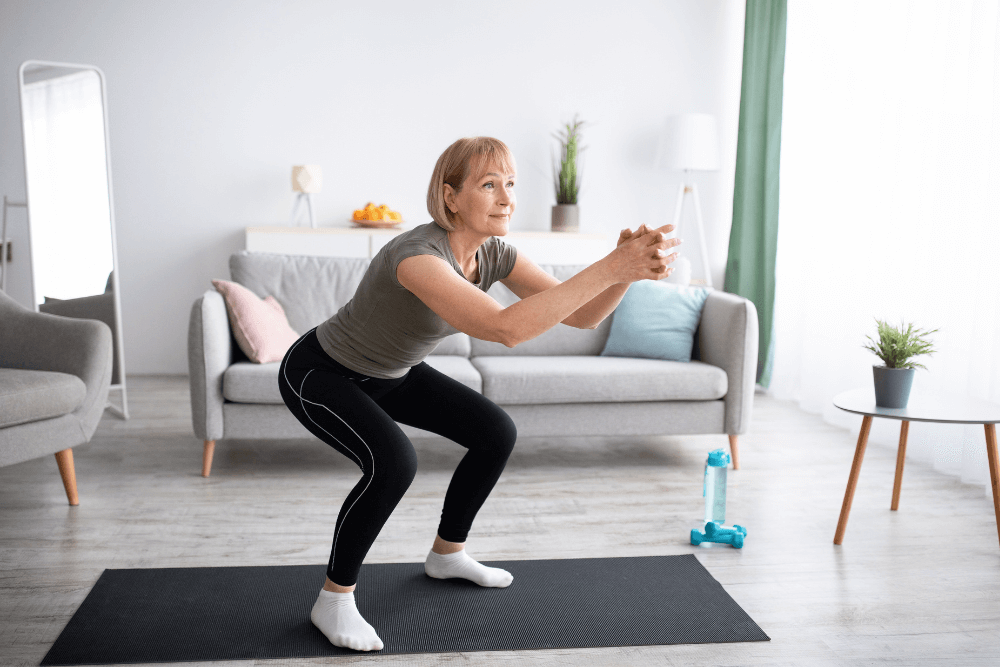
This is great and a timely eye opener…. one really has to stick to a discipline firstly to establish a time to do this and second to follow the proper movement technique.
Thank you for sharing this big help for us seniors!
I found this article very informative and definitely beneficial to me being in my 50’s . Also it makes a lot of desserts to me. Thank you I will certainly be trying some of these excercises.
Very comprehensive,informative
Gracias!!
jose
Useful information.